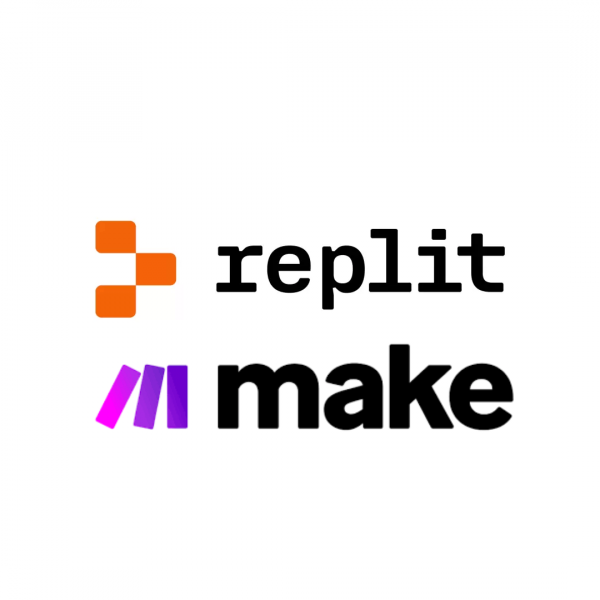
Dubai’s tech and creative sectors are booming, and local startups and agencies are keen on tools that save time and cut costs. On one hand, Make (formerly Integromat) is a no‑code automation platform that lets non-technical teams link apps and automate workflows visually. On the other hand, Replit is an AI‑powered cloud IDE for building and deploying software, aimed at developers. Both promise “do more with less,” but they suit different tasks. We compare them for Dubai’s SMBs (tech startups, creative houses and marketing firms) across Cost, Ease of Use, Integrations, and Scalability to help you decide which fits your needs best.
Cost
Make and Replit have very different pricing models. Make offers a free tier (1,000 operations/month) and paid plans priced by the number of operations (actions) your automations perform. For example, Make’s Core plan is just $9/month for 10,000 ops, Pro is $16, and a Teams plan is $29 – each tier adding more features like priority execution or team roles. (All plans include 2,000+ pre-built connectors and unlimited automation scenarios.) Because Make counts every API call as an operation, heavy usage or frequent polling can consume your quota quickly, potentially raising costs.
Replit’s pricing is subscription plus pay‑as‑you‑go compute. Its Starter tier is free, but extremely limited (only 3 public projects, 1 vCPU/2 GB RAM, 2 GB storage). The paid Core plan is roughly $20/month (with annual billing) and unlocks unlimited public/private “Repls,” powerful dev resources (4 vCPU/8 GB RAM), and $25 of monthly usage credits. Teams cost about $35–$40 per user/month and add collaboration features and $40 credits. (Note: Some users report Replit testing higher prices, but official pricing remains ~$20 annually for Core.) Beyond subscriptions, deploying apps on Replit incurs usage charges (compute units and requests). A recent Replit update (Mar 2025) actually raised deployment fees for autoscaling projects, so heavy web apps can get costly if usage surges.
In summary, Make’s base plans are cheaper (in flat dollars) than Replit’s and scale by operations. Replit’s monthly fee looks higher, but it includes generous AI and hosting credits. For small teams, Make often wins on sticker price. However, Dubai firms should watch hidden costs: Make’s per-op model and Replit’s usage billing both can jump if workflows or user loads spike.
Ease of Use
Make is built for non‑coders. Its drag‑and‑drop visual builder lets anyone lay out workflows as flowcharts, with “routers” for branching logic and drag‑in filters and error handlers. Even the free Make plan provides a no‑code interface and hundreds of templates. This lowers the learning curve: marketing managers or operations staff can link Gmail, social media, CRMs and more without writing a line of code. As one analysis notes, Make’s interface even highlights function syntax to prevent mistakes, making formula logic easier to manage than its predecessor. In short, teams can build automations by visually wiring together apps.
By contrast, Replit assumes a coding mindset. It provides a full web-based IDE (code editor plus console plus files) where you write or generate code. Users benefit from powerful conveniences: “multiplayer” live coding for team sessions, Git integration for version control, and one-click hosting. Its standout is AI assistance: the Replit Agent or Assistant can turn a plain-English prompt into working code. For example, you can ask Replit to “create a web app that uses Stripe to accept payments,” and its AI will scaffold the necessary code. This is great for developers or small agencies that can phrase their needs in English. However, for a non-technical marketer or designer, Replit still feels like a coding tool (even with AI help). It requires enough technical savvy to review and tweak the generated code. As Baytech Consulting observes, Replit excels at “rapid prototyping” and teaching code without setup, but it is “less snappy” than a desktop IDE and its lower tiers throttle resources.
In practice for Dubai teams: Make is easier for admins or creators with little coding background – the visual approach and templates are very intuitive. Replit is more familiar to developers: if your startup already has coding talent (or you want to build custom apps/algorithms), Replit’s AI help will speed up writing code and webapps. Creative agencies might end up using both: Make to automate routine client workflows (like scheduling posts or syncing spreadsheets), and Replit to build any bespoke web tools or sites.
Integrations with Other Platforms
Make’s core strength is its connector library. It boasts over 2,000 ready-made integrations spanning every category: email (Gmail, SendGrid), chat (Slack, Teams), social (Facebook, Instagram), marketing (Mailchimp, HubSpot), sales (Salesforce, Pipedrive) and many more. You literally just choose an app and a trigger or action module; Make handles the underlying API calls. For example, a Dubai marketing house could link their Instagram account, Google Sheets, and a local CRM in one flow without coding. This wide compatibility means local startups can plug in regional or global services (like Shopify stores or Xero invoices) easily.
Replit doesn’t have a built-in “app marketplace.” Instead, it relies on code/AI to integrate. You can install libraries (e.g. a Stripe SDK) or call any REST API in your code. The AI Agent can automate even that step: as the docs explain, mentioning “Stripe” or “SendGrid” in a prompt makes Replit inject the relevant code. In effect, Replit can integrate with anything that has an API, but it requires a developer to set it up (even if AI speeds it up). It also has built-in support for databases (ReplitDB or Redis, for example) and version control via Git. But unlike Make, it won’t proactively sync with your third‑party apps unless coded to do so.
In short, Make is like a universal adapter – plug-and-play for 2000+ services. Replit is like a coding toolbox – extremely flexible (since any API is reachable in code) but with no click-to-connect interface. For quick wins, a Dubai SMB might automate onboarding emails and CRM updates in minutes on Make. If a project needs a custom integration (say, pulling data from an in-house database or calling a specialized local API), Replit’s dev environment lets the technical team build it precisely, with AI assistance to cut down the coding time.
Scalability
Both platforms run in the cloud, but they scale very differently. Make scales by subscription tier (more operations/month) or custom enterprise arrangements. Its free/entry tiers cap the monthly operations (1K ops free, 10K ops at $9/mo, etc.). If your Dubai startup’s automations grow (e.g. processing thousands of leads or messages per day), you’d upgrade to Pro or Teams, and possibly a custom plan. In practice, scaling up means paying linearly for extra usage. For example, a typical estimate noted that 40,000 ops on Make’s Pro plan costs about $53/month (annual billing). There’s no known hard technical limit – enterprise plans can handle millions of ops – but costs can climb steeply with volume. That said, for most small businesses automating marketing, admin, or basic IT tasks, Make’s higher plans suffice without hitting the ceiling.
Replit scales by compute usage on deployed apps and by plan resources for development. You develop on Core/Teams, then use their “Deployments” to put apps on the web. Simple sites or APIs can run on the free static-hosting tier (100 GiB outbound data included). For dynamic workloads, Replit uses Autoscale (paying per CPU-second and request) or fixed-rate Reserved VMs. Replit’s recent billing update notes that autoscale deployments now have a base fee and higher per-unit costs. In effect, a small weekend project might cost a few dollars, but an app with 10,000 daily users could incur a significant monthly bill. Also, Replit’s free/dev tiers impose resource caps (e.g. limited RAM or hours). For a big growth spike, you’d likely move to Teams plan (more RAM/cores) and possibly purchase more compute units.
In summary: Make can scale out across many automations as needed, but each step-up increases your subscription in discrete jumps. Replit can theoretically support huge apps by autoscaling servers, but at an ongoing usage cost. Neither is unlimited: heavy operations (high data throughput or intensive computing) may outgrow them. Industry analysts point out that Replit is not yet ideal for very large, mission-critical systems, and any high-volume Make setup needs careful cost planning. For most Dubai SMB use‑cases (moderate automation flows or small web apps), both will scale acceptably. Critical to remember: as entrepreneur advice notes, Dubai’s startups often prioritize smart scaling – leveraging automation/AI to grow without ballooning headcount. Both tools align with that aim, but one is batch‑automation oriented (Make) and the other is app‑development oriented (Replit).
Verdict
In Dubai’s fast-moving business landscape, the choice depends on the job. If your team’s priority is to automate marketing campaigns, data syncs, notifications or routine workflows without hiring developers, Make is usually the winner. Its low entry cost and vast connector library mean a marketing house or small startup can quickly build complex automations (for example, multilingual email sequences or campaign tracking) in minutes. This aligns well with local needs: UAE entrepreneurs are leveraging AI/automation to scale lean and handle repetitive tasks.
Conversely, if you need to build or host custom software – say a client portal, a small web app, or a prototype – and you have (or can hire) some coding talent, Replit shines. It offers a collaborative dev environment with AI co‑pilot and straightforward deployment, lowering the barrier to ship apps. For instance, a Dubai tech startup can use Replit to code a prototype AI chatbot or e-commerce site much faster than setting up servers. Yet, non-technical users will find Replit more complex to use, whereas Make remains friendly to non-coders.
In practice, many SMBs might use both: Make to glue together existing services, and Replit to build any bespoke tools. For a creative agency, Make might handle the daily grind (posting on Instagram, logging contacts in Salesforce), while Replit could host the agency’s own website or a custom campaign microsite.
Ultimately, weigh your team’s skills and goals. For pure automation and integration at a low cost, lean toward Make. For coding flexibility and AI-powered development, Replit is the go-to – but budget for its higher pricing and usage fees. Dubai’s tech ecosystem encourages experimentation with both no-code and AI-based platforms. By matching the tool to the task, small businesses here can get the best of both worlds: efficient workflows and rapid app development.
Comparison at a Glance:
| Feature | Make (Integromat) | Replit |
|---|---|---|
| Type of Tool | No-code integration/automation platform | Cloud IDE & hosting for developers |
| Cost (Start) | Free (1,000 ops/mo)Core $9/mo (10k ops) | Free (3 public Repls)Core ~$20/mo (annual) |
| Team Pricing | Teams plan $29/mo (10k ops) | Teams ~$35–$40/user/mo |
| Ease of Use | Visual drag/drop workflowsNo coding needed | Code editor with AI assistantRequires programming |
| Integrations | 2,000+ pre-built connectors (apps, APIs) | No connector marketplace; integrate via code or AI prompts |
| Hosting/Deploy | N/A (focus is on automation) | Built-in hosting (static, autoscale, reserved VMs) |
| Scalability | Scale by upgrading plan (more ops); Enterprise available | Autoscale compute (pay-per-use); higher tiers give more resources |
| Good for | Automating marketing, sales, IT workflows; anyone (non-coders) | Building apps, prototypes, collaborative coding; dev teams with AI help |
| Limitations | Operations cap on plans; hidden op usage costs | Resource limits on free tier; less suited for very large, latency-critical apps |
In the end, Dubai’s SMBs should view Make and Replit as complementary tools. The former speeds up routine tasks without code, and the latter accelerates building custom solutions with AI. The best results often come from using each where it fits: use Make to automate the “plumbing” between your apps, and Replit to create the “engine” that drives your unique software needs.
Also published on Medium.





